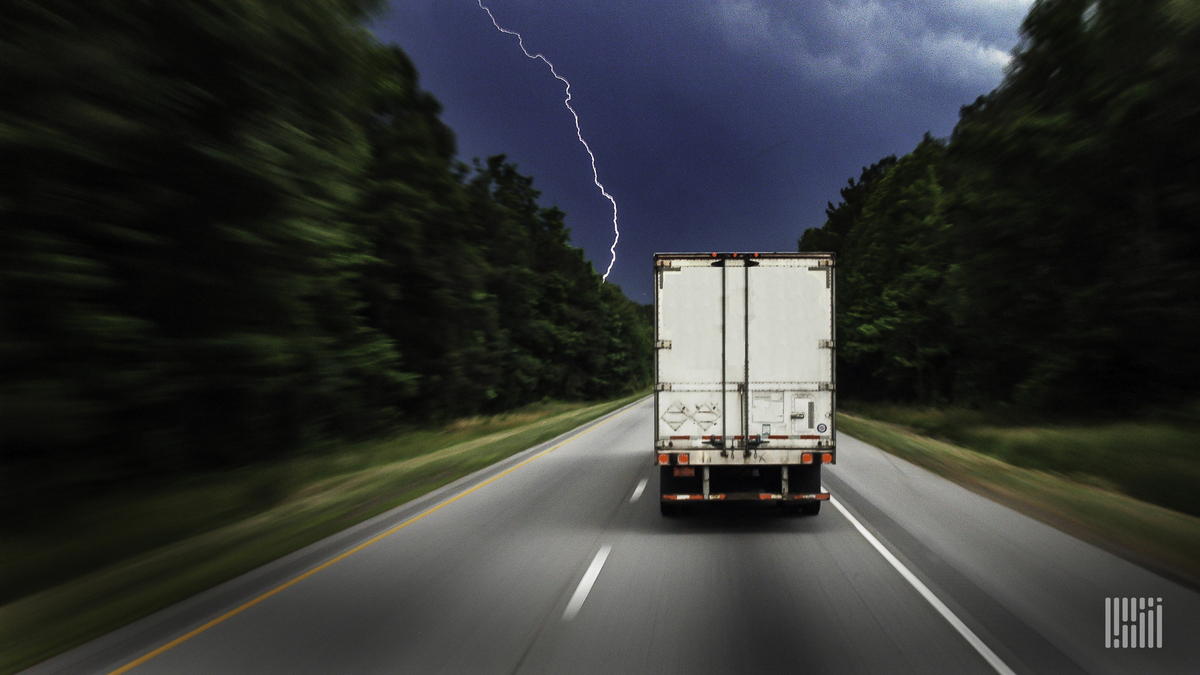
Companies have been laser focused on streamlining their supply chains and cutting out inefficiencies over the past few years. Advances in technology have allowed companies to gain new levels of visibility into their shipments, prevent equipment breakdowns before they occur and automate much of the routine paperwork inherent to doing business. However, no amount of technological advancement has been able to control Mother Nature.
There are more than 5.8 million vehicle crashes each year in the United States. About 21% of these crashes — more than 1.23 million — are weather-related, according to the National Highway Transportation Safety Administration. Additionally, the estimated cost of weather-related delays to trucking companies ranges from $2.2 billion to $3.5 billion annually, according to the U.S. Department of Transportation.
Weather disruptions have always been common across the supply chain. With climate change-induced severe weather conditions on the rise, logistics companies should expect – and plan for – even more challenging conditions in the future.
Companies most recently saw this play out when snow storms pummeled the South last month. The region is not accustomed to severe winter weather, and most Southern cities do not have the infrastructure to accommodate snow. This makes for dangerous driving conditions, significant freight delays and hesitant drivers.
A natural result of continued strained capacity and industry-wide labor shortage, many drivers are more hesitant to accept those loads, despite being in an area more prepared for extreme weather.
Similar to unexpected severe weather, shippers will need to plan ahead for these possibilities in order to find solutions and manage consumer expectations.
“With the state of the market today, drivers have the opportunity to say no to loads they do not want to accept. Shippers should keep this in mind when routing shipments through areas with severe weather,” Emerge Director of Operations Scott Parker said. “Drivers have choices, so if they can avoid going into Minnesota when it is -5 degrees, many of them will do that.”
The key to managing severe weather and decreasing disruptions lies in accurate forecasting and increased knowledge of potential upcoming conditions.
“The sooner we can know what we’re up against, the sooner we can start getting in front of things as an operations team,” Parker said. “You have to make sure you are focused on the entire country. Knowledge is power when it comes to weather.”
Technology companies are continuously working to improve road condition forecasting. Earlier this year, Global Weather Corp. – forecast services provider for AccuWeather – spoke with FreightWaves about its latest efforts to make the road safer through advanced condition monitoring technology.
“GWC developed a unique physics-based model to compute how road surfaces respond initially to rain or snow, as well as when the road freezes or dries after rain or snow ends,” FreightWaves Senior Meteorologist Nick Austin reported. “This data stream product, RoadWX, can estimate road temps to within 1 to 2 degrees Celsius anywhere in North America, Europe and China.”
GWC partnered with NIRA Dynamics AB – part of the Volkswagen Group – to combine its forecasting model with vehicle technology. Data from GWC will help the company improve the reliability of vehicle features like its tire grip indicator.
This partnership signals what is possible when it comes to making the roads safer for everyone, as well as decreasing freight disruption in times of severe weather.
“We are getting better at providing the technology necessary to benchmark off of historical cost trends, but increasingly we need to consider the changing weather disruptions to those expectations. With the amount of unexpected and severe weather patterns we’ve been experiencing, the best technology warns us about impending weather conditions sooner so we can plan accordingly,” Parker said. As more data is being collected and seasonality trends begin to emerge, the technology begins to predict and provide insights. This enables shippers and carriers to make the most informed and cost-effective decision for their freight.”










